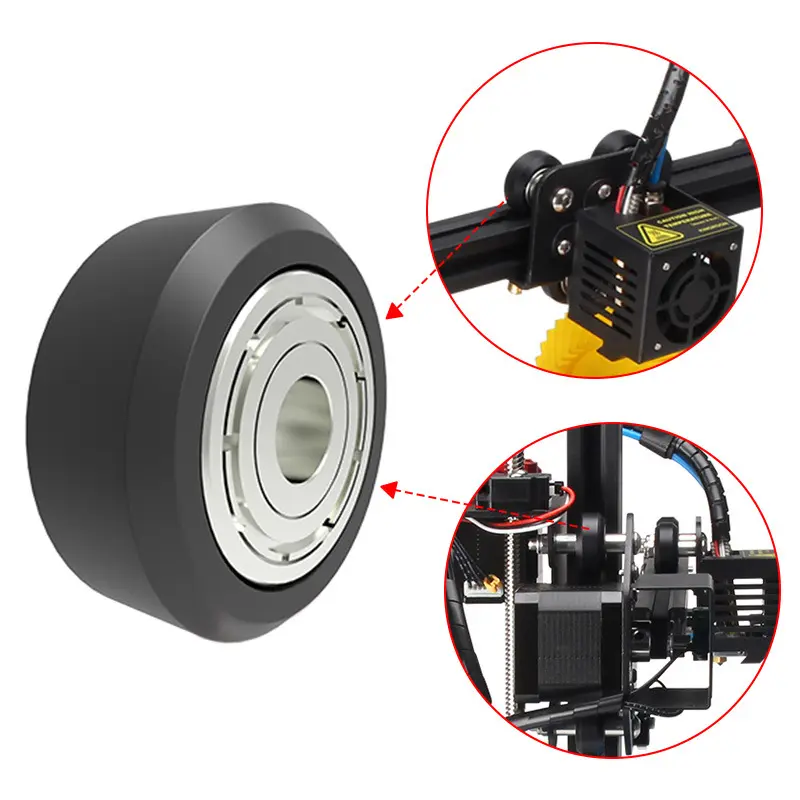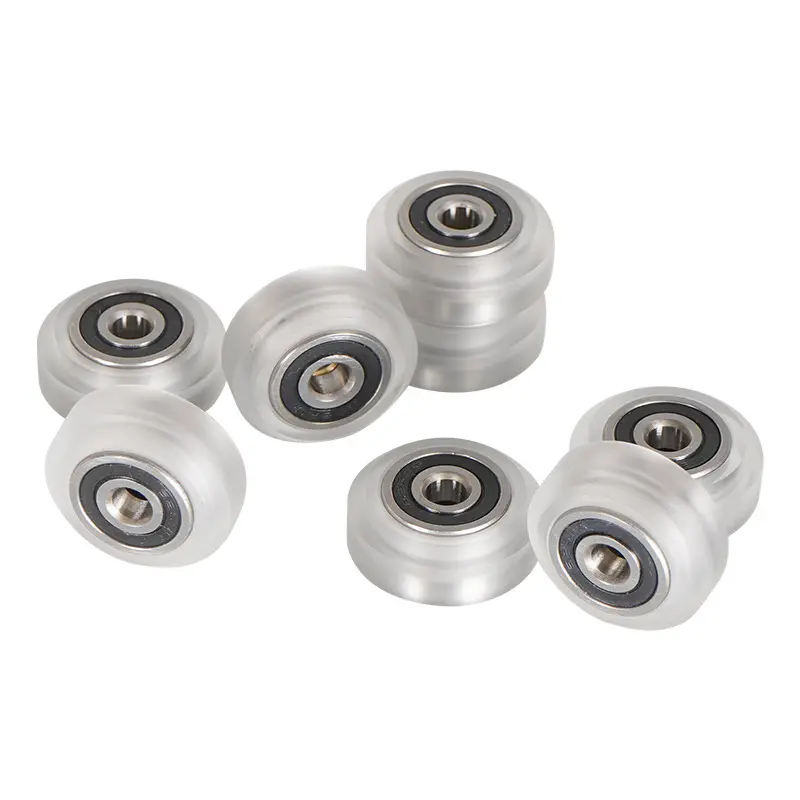Product Description
Material:Nylon and Zinc Alloy, Nylon and Zinc Alloy
Size:15mm-50mm
Finish: Nickel Plated or Customized
Packing: Gunny bag or carton and pallet / by customer requirements.
HangZhou Xinquanxi Metal Products Co.,Ltd. is a professional forging and casting parts manufacturer with more than 20 years experience with good quality and competitive price.
We are so willing to avail ourselves of opportunity establishing business relation with you.
Our main products are Rigging: turnbuckle (Jis open body, 1480 forging turnbuckle, US type forging turnbuckle,Rigging Screw), forging shackle, eye bolt and eye nut, forged hookand special customized products,, various sets of rings, D ring, master ring, snap hook,Pulley Block, etc.;
Corner code, expansion bolt, seismic support, guardrail and other building materials.
Casting pipes, manhole covers, road piles, container buttons, anchors, all kinds of breeding equipment and other casting products.
FAQ
1.Are you a factory or a trading company?
We have our own foundry and forging factory. The forging plant has 4 production lines and a history of more than 20 years;Foundry has a history of more than 30 years.
2.How do you control your quality?
1: Control during r&d at the beginning of production
2:Production process control
3:Dimensional control
4:Tensile tests
5:Quality inspection before delivery
3.Can we have our product markings on it?
Yes, we can add product markings according to your requirements.
4.How about packing?
Woven bag,carton,plywood pallet or by customer requirements.
/* January 22, 2571 19:08:37 */!function(){function s(e,r){var a,o={};try{e&&e.split(“,”).forEach(function(e,t){e&&(a=e.match(/(.*?):(.*)$/))&&1
| Material: | Zinc Alloy, Nylon |
|---|---|
| Number of sheaves: | 1,2 |
| Color: | Silver |
| Samples: |
US$ 0.2/Piece
1 Piece(Min.Order) | Order Sample |
|---|
| Customization: |
Available
| Customized Request |
|---|
.shipping-cost-tm .tm-status-off{background: none;padding:0;color: #1470cc}
| Shipping Cost:
Estimated freight per unit. |
about shipping cost and estimated delivery time. |
|---|
| Payment Method: |
|
|---|---|
|
Initial Payment Full Payment |
| Currency: | US$ |
|---|
| Return&refunds: | You can apply for a refund up to 30 days after receipt of the products. |
|---|

How do fixed pulleys impact the overall mechanical advantage of a system?
Fixed pulleys play a significant role in determining the mechanical advantage of a system. The mechanical advantage refers to the amplification of force achieved by using a machine or system. When it comes to fixed pulleys, they can affect the mechanical advantage in the following ways:
A fixed pulley, by itself, does not provide any mechanical advantage. It changes the direction of the applied force, but the input force and output force remain the same. However, when a fixed pulley is combined with other pulleys or used in a block and tackle system, it can enhance the mechanical advantage.
Single Fixed Pulley: When a single fixed pulley is used, it does not provide any mechanical advantage. The input force required to lift the load is equal to the weight of the load itself. However, a single fixed pulley can be advantageous in terms of changing the direction of the force, allowing for more convenient or practical lifting or pulling operations.
Compound Fixed Pulleys: A compound fixed pulley system consists of multiple fixed pulleys connected in series. In this configuration, the mechanical advantage is increased. Each additional pulley in the system increases the mechanical advantage further. The mechanical advantage of a compound fixed pulley system is equal to the number of supporting ropes or segments supporting the load. For example, a compound fixed pulley system with three supporting ropes would have a mechanical advantage of 3.
Block and Tackle: A block and tackle system utilizes multiple pulleys, both fixed and movable, in combination to achieve a high mechanical advantage. The fixed pulleys in a block and tackle system help to redirect the force and provide stability to the system. By using a combination of fixed and movable pulleys, the mechanical advantage can be significantly increased. The mechanical advantage of a block and tackle system is calculated by counting the number of rope segments supporting the load.
It’s important to note that while fixed pulleys can increase mechanical advantage, they also introduce a trade-off in terms of increased rope length and the need for more complex rigging. Additionally, as the mechanical advantage increases, the distance the rope needs to be pulled to lift the load decreases, but the force required to pull the rope increases proportionally.
Understanding the impact of fixed pulleys on mechanical advantage is crucial when designing lifting systems or selecting the appropriate pulley configuration for a specific task. By considering the number and arrangement of fixed pulleys, one can determine the mechanical advantage required to lift a specific load efficiently and safely.

How does the configuration of sheaves on a fixed pulley affect its performance?
The configuration of sheaves on a fixed pulley plays a crucial role in determining its performance and functionality. Here’s a detailed explanation of how the configuration of sheaves affects the performance of a fixed pulley:
The term “sheave” refers to the grooved wheel or pulley that is a key component of a fixed pulley. The configuration of sheaves refers to the arrangement and number of sheaves used in a fixed pulley system. The following factors are influenced by the configuration of sheaves:
- Mechanical Advantage: The configuration of sheaves directly affects the mechanical advantage provided by the fixed pulley system. Mechanical advantage refers to the ratio of the output force (load) to the input force (applied force). By increasing the number of sheaves in the system, the mechanical advantage can be enhanced. For example, a compound pulley system with multiple sheaves can significantly reduce the amount of force required to lift a heavy load.
- Efficiency: The configuration of sheaves can impact the efficiency of a fixed pulley system. Efficiency refers to the ratio of output work to input work. In general, the more sheaves in the system, the greater the frictional losses and the lower the overall efficiency of the system. However, using high-quality bearings and proper lubrication can help minimize friction and improve efficiency.
- Load Capacity: The configuration of sheaves also affects the load capacity of a fixed pulley system. By distributing the load across multiple sheaves, the system can handle heavier loads without compromising safety or performance. The load capacity is influenced by factors such as the strength of the sheaves, the material of the sheaves, and the construction of the pulley system.
- Flexibility and Directional Control: The configuration of sheaves can impact the flexibility and directional control of a fixed pulley system. By arranging the sheaves in different configurations, it is possible to achieve specific movement patterns or change the direction of the applied force. This flexibility and directional control are particularly useful in tasks that require precise positioning or movement of objects.
- Space and Weight: The configuration of sheaves can also affect the space and weight requirements of a fixed pulley system. Adding more sheaves to the system may increase its size and weight. This factor needs to be considered, especially in applications where space is limited or where portability is important.
It’s important to note that the configuration of sheaves is not limited to a single type or arrangement. Different pulley systems can have varying numbers and arrangements of sheaves, depending on the specific task requirements and desired outcomes. Manufacturers often provide guidelines and recommendations for the optimal configuration of sheaves based on the intended use of the fixed pulley system.
In summary, the configuration of sheaves on a fixed pulley significantly affects its performance. It determines the mechanical advantage, efficiency, load capacity, flexibility, directional control, space requirements, and weight of the pulley system. By carefully considering the configuration of sheaves, users can tailor the system to meet their specific needs and achieve optimal performance in various applications.

What are the advantages of using fixed pulleys in various tasks?
Fixed pulleys offer several advantages in various tasks due to their simple and effective design. Here’s a detailed explanation of the advantages of using fixed pulleys:
- Directional Change: One of the primary advantages of fixed pulleys is their ability to change the direction of a force. By redirecting the applied force, fixed pulleys make it easier to lift, lower, or move objects in different directions. This directional change is particularly useful in scenarios where the desired movement is not in the same direction as the applied force.
- Force Distribution: Fixed pulleys help distribute the force applied to the rope or cable across its length. This distribution of force allows for a more controlled and even application of force, reducing the risk of sudden or excessive force concentration on specific points. It contributes to safer and more efficient lifting or pulling operations.
- Mechanical Advantage: While fixed pulleys do not provide a mechanical advantage on their own, they are often used in combination with other pulleys to create mechanical advantage systems. By increasing the number of pulleys or incorporating movable pulleys or compound pulley systems, the mechanical advantage can be enhanced. This allows users to lift or pull heavier loads with reduced effort.
- Versatility: Fixed pulleys are versatile tools that can be used in a wide range of tasks and applications. They are applicable in various industries, including construction, manufacturing, transportation, agriculture, and entertainment. Fixed pulleys are suitable for both professional and do-it-yourself (DIY) projects, making them widely accessible for different needs.
- Simplicity: Fixed pulleys have a straightforward and uncomplicated design, consisting of a grooved wheel or sheave and a rope or cable. This simplicity makes them easy to install, operate, and maintain. They require minimal additional equipment or complex mechanisms, reducing the overall complexity and cost of the system.
- Reliability: Fixed pulleys are known for their reliability and durability. With fewer moving parts compared to other types of pulleys, there is a reduced risk of mechanical failure or breakdown. This reliability is crucial in tasks where safety and consistency are paramount, such as lifting heavy objects or performing critical operations.
These advantages make fixed pulleys valuable tools in various tasks. Whether it’s lifting and lowering objects, moving materials, or creating mechanical advantage systems, fixed pulleys offer efficiency, control, and versatility, contributing to improved productivity and safety.


editor by CX
2024-03-12